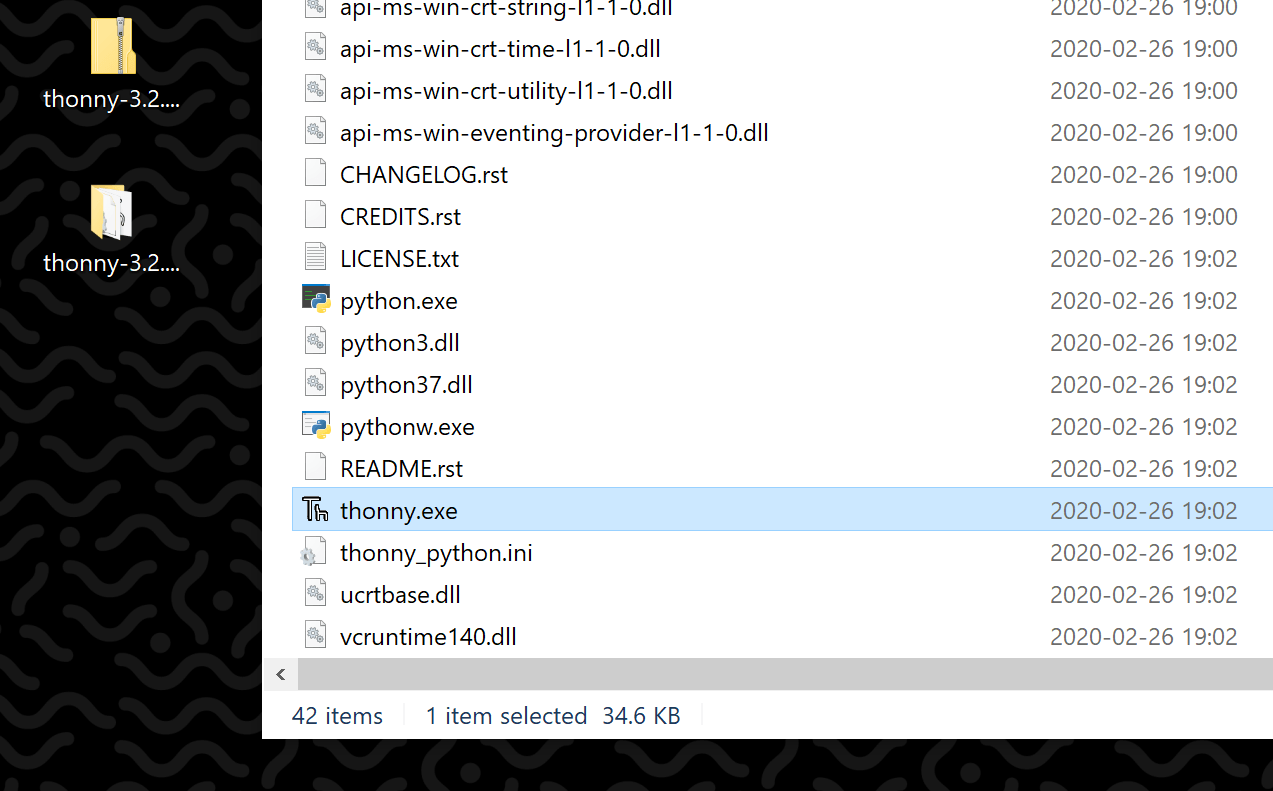

If you do not want to use it automatically, go to Settings/Preferences | Build, Execution, Deployment | Debugger | Stepping and clear the Always do smart step into checkbox. This feature is called Smart step into.īy default, smart step into is used every time when there are multiple method calls on the line. If there are several method calls on the line, P圜harm asks you which method to enter. Use this option when you are not sure the method is returning a correct result. Steps into the method to show what happens inside it. To skip any breakpoints on the way, use Force step over. If there are breakpoints inside the skipped methods, the debugger will stop at them.

The implementation of the methods is skipped, and you move straight to the next line of the caller method.
TOOLS BUTTON IN THONNY CODE
Steps over the current line of code and takes you to the next line even if the highlighted line has method calls in it. The stepping buttons are located on the Debug window toolbar. P圜harm provides a set of stepping actions, which are used depending on your strategy (for example, whether you need to go directly to the next line or enter the methods invoked on your way there). But for now, save it on your computer.Stepping is the process of controlling step-by-step execution of the program. That means we can also directly upload files to a device. This gives two options to save this file either to your computer or directly to your devices such as Raspberry Pi Pico. When you click on the save icon (2), this pop-up window will appear. After that copy the following code in a new file and save it by clicking the save icon (2) with the name main.py. To create a new file click on the new file icon (1). For demonstration, we will perform a simple experiment of blinking onboard LED of Pi Pico by following all the necessary steps Create MicroPython File in Thonny IDEįirst, we need to create a main.py file that will contain our main program code which would be executed.
TOOLS BUTTON IN THONNY HOW TO
In this section, we will see how to create a new MicroPython file and how to upload the script to Raspberry pi Pico using Thonny IDE. Stop > This button is to stop or halt the program code whichever line is in.Resume > This button is to resume the debug mode.Step Out> This arrow button is to exit debug action.Step Into > This arrow button is to debug the code with step in into every code in deep.Step Over > This arrow button is to use the debug the code line by line.Debug > This button is used in debug code.Run > This button is to Run the code and execute.Save > This button is to save our code.Open Files>This button will Open files in the folder which we saved.

New Files > This button will create new files to write python script.I will describe them in order of the numbers. The tools section has several different tools with different functionalities. The terminal also provides information about the state of an executing program, shows errors related with upload, syntax errors, prints messages, etc… Tools Section On the MicroPython Shell you can type commands to be executed immediately by your ESP board without the need to upload new files. The Shell section is found at the bottom.
TOOLS BUTTON IN THONNY INSTALL
It is available to install on Windows, Linux, and Mac OS. You can realize the popularity of Thonny IDE from this that it comes pre-installed in Raspian OS which is an operating system for a Raspberry Pi. This makes it very suitable for beginners. It has an easy interface to install packages.It enables users to step into a function call by providing details about local variables and displaying the code pointer.Its debugger is simple to use as no knowledge of breakpoints is required.It is easy to start with as its installer also installs Python 3.7.It inspects code to provide bracket matching and highlight errors.The following are some of the primary features of Thonny: Thonny IDE is an open-source development tool for python programming which is used to write and upload MicroPython programs to different development boards such as Raspberry Pi Pico, ESP32, and ESP8266. Getting Started-Raspberry Pi Pico-uP圜raft and MicroPython.Getting started with Raspberry Pi Pico development board.Under this tutorial we will see how to install the Thonny IDE on windows, will see basic components & tools available with Thonny IDE and will build simple MicroPython script to Onboard LED available with Raspberry Pi Pico development board, In this getting started user guide for Raspberry Pi Pico Board, we will see how to use the Thonny IDE to program the Raspi Pico Board using MicroPython Firmware.


 0 kommentar(er)
0 kommentar(er)
